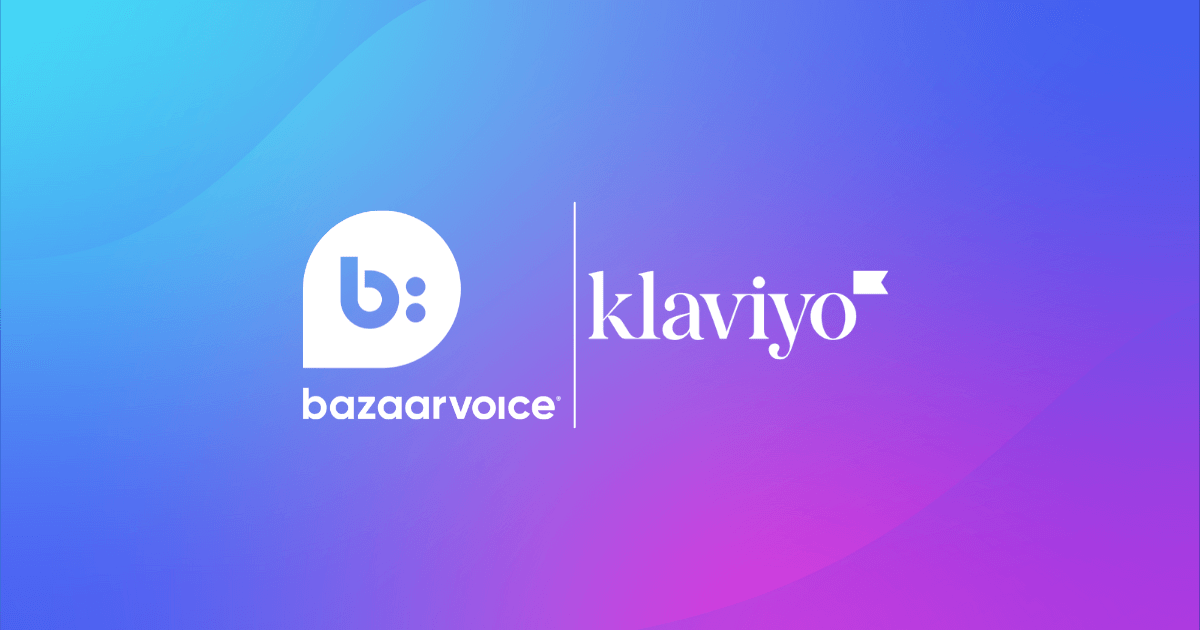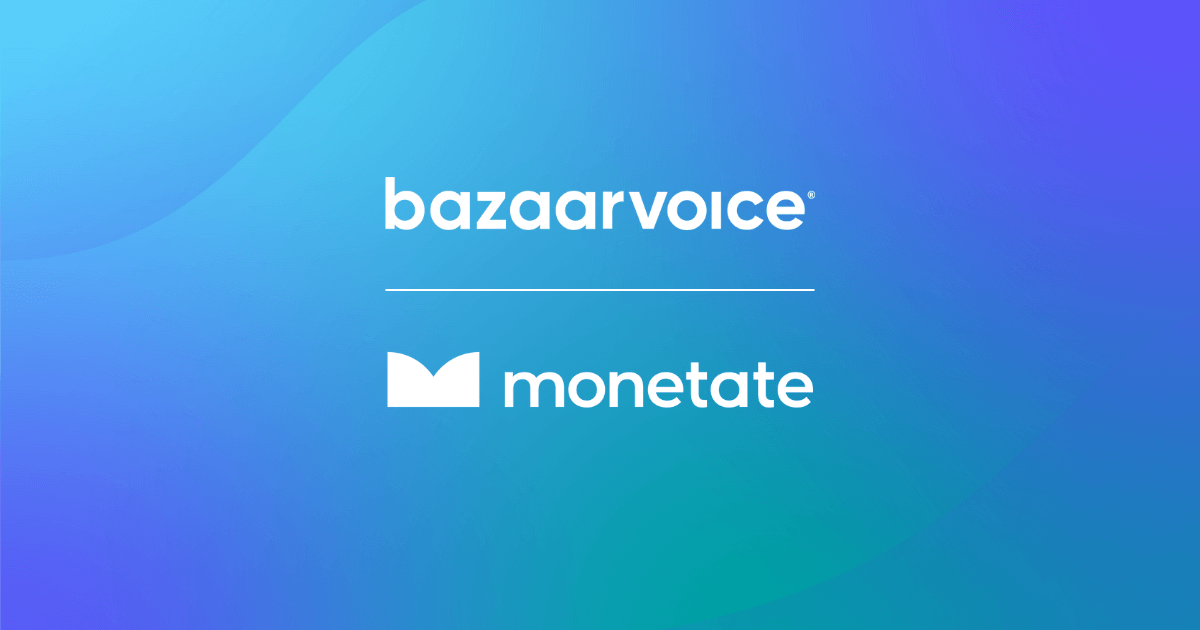January 19, 2024
What does the modern consumer want? Quality products, for one. Excellent customer service, certainly. But there’s one thing, one word that unfolds into dozens of smaller actions with the potential to transform the customer experience and your bottom line — personalization. But with contextualization, you’re able to take that to another level.
People want a seamless experience when they shop, one that’s tailored to their preferences, needs, and behavior. And if brands meet these expectations, they’ll be rewarded with loyalty and revenue, even in times of rising inflation and economic uncertainty.
According to Salesforce, 65% of consumers say they will stay loyal to companies if they offer more personalized experiences. And in a recent Twilio Segment report, 80% of business leaders revealed consumers spend more (38% on average) when their experience is personalized.
Yet, many brands still struggle to deliver on this front. Salesforce research also discovered that consumers’ top frustrations range from disconnected experiences (40%) to being offered products that aren’t relevant to them (33%).
So how can you effectively answer the call for a personalized customer journey that rewards both you and your customer base? How can you deliver the right message, in the right place, at the right time? With contextualization.
Chapters:
- What is contextualization?
- The role of digital body language
- Privacy concerns and first-party data
- Contextualization strategies in action
- Personalize the entire customer journey with a contextualization solution
What is contextualization?
Contextualization is the practice of seamlessly integrating e-commerce shopping opportunities into a shoppers daily life, regardless of what channel they’re on or where in the buying process. With contextualization, your shoppers are able to find and purchase products within the context in which they discover them, be it on an app, social platform, email, or wherever they are. In practice, this could be a voice command to an Amazon Echo or a “buy now” link on Instagram or a product page.
This hyper-personalized process delivers your customers (and potential customers) an elevated shopping experience which inspires more purchases.
But while personalization relies on information from customers that you’ve previously collected, contextualization anticipates shopper behavior and reacts based on this prediction. It’s like a digital version of reading a friend or family member’s body language.
The role of digital body language
Think about the last conversation you had with a friend over coffee. Chances are, words were just one part of how you communicated and understood each other. The unspoken element of body language also played a pivotal role. A tilt of the head, a furrowed brow, or a relaxed stance — these non-verbal cues often tell us more than words alone.
Even if we’re not aware of doing so, we instinctively read, interpret, and react to these cues, adjusting our approach, tone, and even our words. This silent feedback guides us in how to build rapport, when to push forward, and when to step back.
In e-commerce, you don’t have physical movements or facial expressions to guide you. Instead, you have digital body language, a virtual counterpart that is equally telling. Throughout the customer journey, every action a visitor takes — from the pages they linger on, to the products they zoom in on, to the reviews they read — is a form of digital body language. These contextual signals are rich with insights, mirroring the silent cues we rely on in personal interactions.
Just as a smile or a frown in a physical store gives away a customer’s feelings, digital actions convey similar messages. A quick series of clicks might indicate excitement or urgency, while prolonged inactivity might suggest confusion or disinterest. Interpreting digital body language is what allows brands to understand and anticipate the needs and preferences of their customers, and create a more personalized, intuitive, and satisfying shopping journey.
How to analyze and respond to digital body language
Shoppers are leaving behind a valuable trail of digital breadcrumbs, but you need to decipher them and respond accordingly. This is best accomplished with machine learning software — tools that capture a vast array of user data, identifying patterns in behavior that might otherwise go unnoticed.
For example, a customer’s hesitation at checkout, indicated by slower mouse movements, can be instantly recognized. The tech can then respond instantly by displaying a reassuring message about product quality, rich reviews, or a limited-time discount offer.
One significant advantage of machine learning is its ability to analyze behavior without the need for user logins. Whether a shopper is a first-time visitor or a returning customer, you can glean valuable insights from their interactions on your site. But 97 – 98% of a website’s traffic is anonymous, which means that personalization based only on previous consumer data can fail to create contextual experiences for almost all of a site’s visitors.
And unlike traditional analytics, which require time for data processing and interpretation, machine learning operates in real-time. This immediacy is vital in the context of digital shopping, where a delay of minutes can mean the difference between a completed sale and an abandoned cart.
Privacy concerns and first-party data
By now, you’ve realized that digital body language is essentially customer data, and acting on it (a.k.a. personalizing the shopping experience) inevitably involves collecting that data. With the collapse of third-party cookies set to become final by the end of 2024, how do you go about it in a way that’s safe and compliant? That’s where first-party data comes in.
First-party data is information collected directly from your customers through interactions with your brand –– be it clicks through to website, transactions, or product searches. Unlike third-party data, this information is owned only by your brand and is provided directly by your customers, meaning you don’t have to rely on data aggregators or third-party domains. And since it’s information you get directly from the source, it’s also more reliable than third-party data.
The key concept when talking about first-party data is consent. This means that to be compliant, you need explicit permission from customers to collect information about how they interact with you. You’ve likely seen this at work before, with websites asking you for permission to store first-party cookies on your browser while also giving you the option to opt in or out of data collection.
To ensure website visitors opt in, be transparent and make it clear that it’s a win-win situation. Tell them what data you’re collecting and why. 67% of shoppers are comfortable giving out their behavioral data to allow brands to enhance their experiences, so explain that by accepting, their information will be used precisely for that purpose.
Contextualization strategies in action
You have your customers’ permission to freely collect their data. Now, it’s time to make the magic happen and use the information to personalize each interaction to their hearts’ content.
Displaying relevant product recommendations
What if you could waltz into a store where every product on display had been handpicked for you? The colors match your taste, the sizes are just right, and every item seems to call out to your unique preferences. You’d likely linger for a while and spend a lot more money than if you were faced with a pile of generic items you had to sift through until something stood out. The same logic can be applied to an e-commerce scenario.
By leveraging data like browsing history, purchase patterns, and search queries, you can curate personalized product suggestions that resonate with each shopper. For instance, if a customer frequently views outdoor gear, showing them the latest camping equipment or hiking apparel would enhance their shopping experience.
Types of product recommendations you can display based on customer data include:
- Similar Items: Suggest products similar to what the customer is currently viewing, like showing different styles of running shoes to a shopper browsing a specific sneaker.
- Previously viewed items: Remind customers of items they’ve looked at in the past, which can be particularly effective in nudging them towards a purchase.
- Cross-selling: Suggest items that complement the customer’s current selection, like recommending a phone case to a customer buying a smartphone.
- Upsell recommendations: Offer premium or upgraded versions of the products the customer is interested in.
- Location-based recommendations: Tailoring suggestions based on the customer’s location can significantly enhance relevance. For example, suggesting lightweight clothing to customers in warmer climates or snow gear to those in colder regions.
Online marketplace Vinted suggests products based on the shopper’s previously bought items.
Personalizing website elements
Websites are dynamic and rich with elements that can be tailored with dynamically updating content that resonates with each shopper. From the moment a customer lands on your page, you can make it so the layout, the content, and the offers are aligned with their interests and behaviors.
One effective approach is to recognize and cater to returning customers. This can be as simple as displaying discounts and highlighting the popularity of items they viewed but didn’t purchase during their last visit. A feature like this not only saves time for the shopper but also demonstrates that your brand values their interest and time.
Other key website areas can dynamically adapt to the visitor’s preferences and behaviors. This includes:
- Homepage banners: Tailor these to showcase products or offers relevant to the visitor’s past interactions. If they’re a first-time visitor, highlight your best-selling or featured products to give them a taste of what your brand offers
- Product pages: Adjust product descriptions and images based on what the visitor has shown interest in previously
- Product categories: Customize the display order of categories or highlight specific ones based on the user’s browsing history or the popularity of products within that category
- Checkout or shopping cart page: Personalize these pages with last-minute additions based on the items in the cart or make the shopper feel great about their choices by highlighting how much money they’re saving
Amazon encourages customers to pick where they left off and prominently displays the most relevant product categories based on previous website behavior.
Enabling dynamic pricing
Dynamic pricing involves adjusting prices based on factors like demand, competitor pricing, and inventory levels. For example, during high-demand periods, such as holiday seasons, prices may increase slightly. In the context of personalization, dynamic pricing means leveraging a customer’s purchase history and engagement levels to adapt pricing in real time.
Past purchase data provides insights into your customers’ preferences and spending habits. For instance, if a customer frequently purchases high-end products, they might be more receptive to premium offerings at slightly higher price points.
Conversely, customers who typically look for deals or budget items could be more price-sensitive, and offering them competitively priced products could increase the likelihood of repeat purchases.
Customer engagement is another critical factor in dynamic pricing. Customers who regularly interact with your site — whether through frequent visits, newsletter sign-ups, or consistent browsing — show a higher level of interest in your products. This engagement can be a signal to offer personalized discounts or deals, encouraging them to move from browsing to purchasing.
It’s important to remain transparent so you can maintain trust and prevent potential dissatisfaction. Customers should be aware that prices may vary based on several factors, including demand, seasonality, and their shopping behavior.
Adopting triggered messaging
Triggered messages are automated responses to specific actions taken by customers while they peruse your website. Although usually pre-set by e-commerce teams rather than using diigtla body language, they’ll still improve the shopping experience.
Whether someone adds an item to their cart, spends time on a particular product page, or even shows signs of leaving the website, each action can trigger a tailored message that encourages them to move forward in their journey.
Triggered messages can look like:
- Welcome messages: Sent immediately after a new subscription or account creation, these set the tone for the customer relationship (and often include discounts for first-time visitors)
- Abandoned cart reminders: Target customers who have added items to their cart but haven’t completed the purchase, gently nudging them to return. These usually pop up when the customer is about to leave the website, but can also appear when someone comes back
- Post-purchase follow-ups: Messages that thank the customer, provide shipping information, or suggest related products once they complete a purchase
- Special discounts: If a customer is lingering on a product page, a pop up can display a discount code, bundle deal, or a similar strategy that encourages purchase
- Time-sensitive/low-stock messages: These alerts inform customers about limited-time offers or notify them when an item they’ve shown interest in is running low in stock, or if it looks like the visitor is about to leave the page
When it comes to triggered messages, timing matters. They should be sent when the customer’s interaction is still fresh so that the message is relevant and has a greater impact.
Fashion brand Cider uses triggered messages to offer special discounts when first-time visitors access specific product pages.
Personalize the entire customer journey with a contextualization solution
Bazaarvoice’s AI-driven contextualization technology sets the stage for a new level of enhanced online shopping experiences and customer engagement. The solution offers unprecedented insights into shopper behavior, allowing you to deliver precisely timed, relevant content that resonates with each customer’s unique journey.
Want to learn more?
Get started








